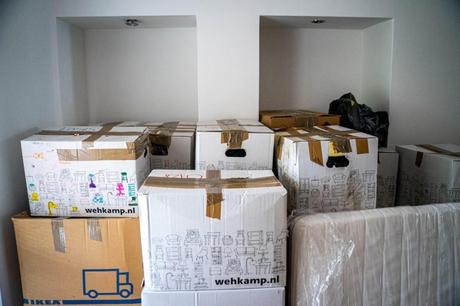 Share
Facebook
Twitter
LinkedIn
Share
Facebook
Twitter
LinkedIn
We’re all familiar with the saying that “a journey of a thousand miles begins with a single step.” While it’s true, it’s also important to remember that your furniture needs special care during this long journey. That’s why we put together this guide on how to pack and protect your furniture for moving day so you can be sure it arrives at its new home safe and sound! (And in one piece—or two.)
Pack your furniture in the proper way
When packing your furniture, be sure to use the right box. The size of the box should be appropriate for the piece of furniture that you are packing. For example, large pieces such as an armoire or dresser will require a larger box than smaller items like lamps or picture frames.
When packing a piece of furniture, pay attention to the weight of the box and choose a container that is sturdy enough to support the weight of the item being packed. The container should be large enough so that the item fits snugly inside without shifting around too much during transit. If you’re unsure about whether or not an item will fit inside a certain size box, use a measuring tape to measure its dimensions before deciding on which size box will work best.
You’ll need enough packing material so that no part of your item comes into contact with another object inside its container–this could cause scratches on their surfaces over time if they rub against each other during transportation!
You should also fill up any empty space left over after placing all valuable items inside their respective containers; this helps prevent shifting during transport so nothing gets damaged along the way (and also adds extra weight).
Use crating and padding to protect your furniture
To protect your furniture, you’ll want to use a sturdy box. Pack heavy items on the bottom and lighter ones on top. If you have any crates or packing materials lying around, these are great for protecting corners and sides of each piece of furniture (just make sure they’re clean!). You can also pad your boxes with bubble wrap or other packing material if necessary.
Once everything has been carefully packed into its respective box(es), make sure everything is tightly packed so nothing shifts during transit!
Use corrugated boxes to pack table legs and baseboards
If you’re packing a table or other piece of furniture that has legs and baseboards, take these steps:
· Use a box that is slightly bigger than your piece of furniture. This will allow for extra room to wrap the legs and baseboards with bubble wrap or packing paper once they are removed from the piece.
· Remove any hardware attached to the bottom of your piece (screws, bolts) before placing it in its temporary container. You can also remove drawers if they aren’t going with you on this move; otherwise keep them intact so they don’t get damaged while being transported by movers/shipping companies via truck or plane!
· Place each leg into its own section of corrugated cardboard so when you put everything back together again later–no worries about missing pieces! Wrap each one individually in bubble wrap for added protection against bumps during transit too.
· Once everything is secure inside its protective sleeve – close up tightly around all four sides using duct tape if necessary (or tape runner) then label clearly “Fragile” across top corner(s).
This can really seem daunting, and frankly, it will take up a lot of your time. It is the smartest to hire one of the the best rated furniture removalists from Sydney to do it all for you. This way you will save time and all things will remain safe during the move.
Pack cushions separately
Most people know not to pack up their pillows and comforters, but they forget about their cushions as well. If you have any foam or pillow-top chairs or couches, you need to make sure that they don’t get crushed by other items while they’re being packed up.
Use padding materials
When packing up your furniture pieces, use blankets, pillows and even old clothes to line the inside of boxes so that nothing gets damaged when it’s being moved around during transit. The more padding materials you use, the better protected each piece will be during transport.
Use smaller boxes for smaller items
If there are small pieces of furniture in your home (such as lamps), make sure that these items are placed inside smaller boxes rather than one large box so that they don’t get damaged during transport.
We hope that these tips have given you some insight into how to pack and protect your furniture for a move. We know it can be stressful, but with the right preparation and packing materials, your valuable pieces will be protected in no time at all!
